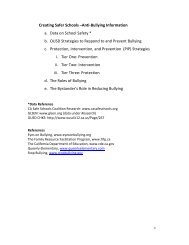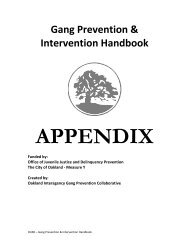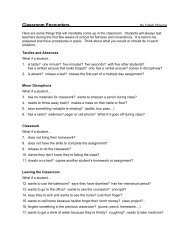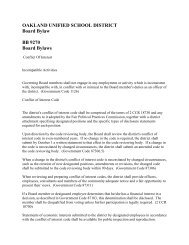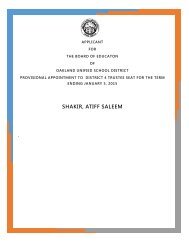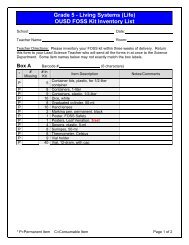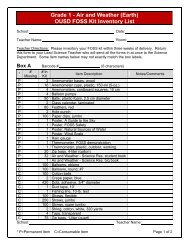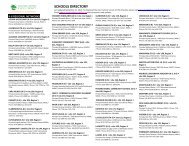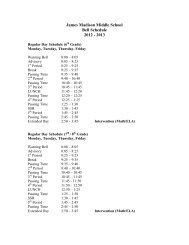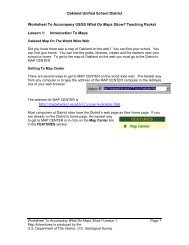Science Framework, part 1 - Free Downloads (CA Dept of Education)
Science Framework, part 1 - Free Downloads (CA Dept of Education)
Science Framework, part 1 - Free Downloads (CA Dept of Education)
- No tags were found...
You also want an ePaper? Increase the reach of your titles
YUMPU automatically turns print PDFs into web optimized ePapers that Google loves.
9• Students in grades nine throughtwelve expand their knowledge <strong>of</strong>habitats, biodiversity, and ecosystemsassociated with the biology/life sciencecontent standards. High schoolearth science standards include thestudy <strong>of</strong> energy and its usage as wellas topics related to water resourcesand the geology <strong>of</strong> California.The Legislature has declared “that[we have] a moral obligation to understandthe world in which [we live] andto protect, enhance, and make thehighest use <strong>of</strong> the land and resources[we hold] in trust for future generations,and that the dignity and worth<strong>of</strong> the individual requires a qualityenvironment in which [we] can developthe full potentials <strong>of</strong> [our] spiritand intellect” (<strong>Education</strong> Code Section8704). Toward that end LEAs andindividual schools throughout Californiaare contributing to the betterment<strong>of</strong> the environment in many ways, includingreplacing asphalt schoolgrounds with gardens, recycling schoolwaste, exchanging scientific data withthe international community throughWeb sites, and restoring local habitats.Specific programs <strong>of</strong> environmentaleducation enhance the learning <strong>of</strong>science at all grade levels. These programsenhance scientific and criticalthinking skills, enabling students toperceive patterns and processes <strong>of</strong> nature,research environmental issues,and propose reasoned solutions. Environmentaleducation is not advocacyfor <strong>part</strong>icular opinions or interests, butit is a means <strong>of</strong> fostering a comprehensiveand critical approach to issues.Students get a personal sense <strong>of</strong> responsibilityfor the environment; consequently,schools are tied more closelyto the life <strong>of</strong> the communities theyserve.Guiding PrinciplesThe following principles form thebasis <strong>of</strong> an effective science educationprogram. They address the complexity<strong>of</strong> the science content and the methodsby which science content is best taught.They clearly define the attributes <strong>of</strong> aquality science curriculum at the elementary,middle, and high schoollevels.Effective science programs arebased on standards and usestandards-based instructionalmaterials.Comprehensive, standards-basedprograms are those in which curriculum,instruction, and assessment arealigned with the grade level-specificcontent standards (kindergartenthrough grade eight) and the contentstrands (grades nine through twelve).Students have opportunities to learnfoundational skills and knowledge inthe elementary and middle grades andto understand concepts, principles, andtheories at the high school level. Studentsuse instructional materials thathave been adopted by the State Board<strong>of</strong> <strong>Education</strong> in kindergarten throughgrade eight. For grades nine throughtwelve, students use instructional materialsthat are determined by localboards <strong>of</strong> education to be consistentwith the science standards and thisframework.A California Standards Test in scienceis now administered at grade five,reflecting the cumulative science standardsfor grades four and five. Therefore,science instruction must be basedChapter 1Introduction tothe <strong>Framework</strong>



